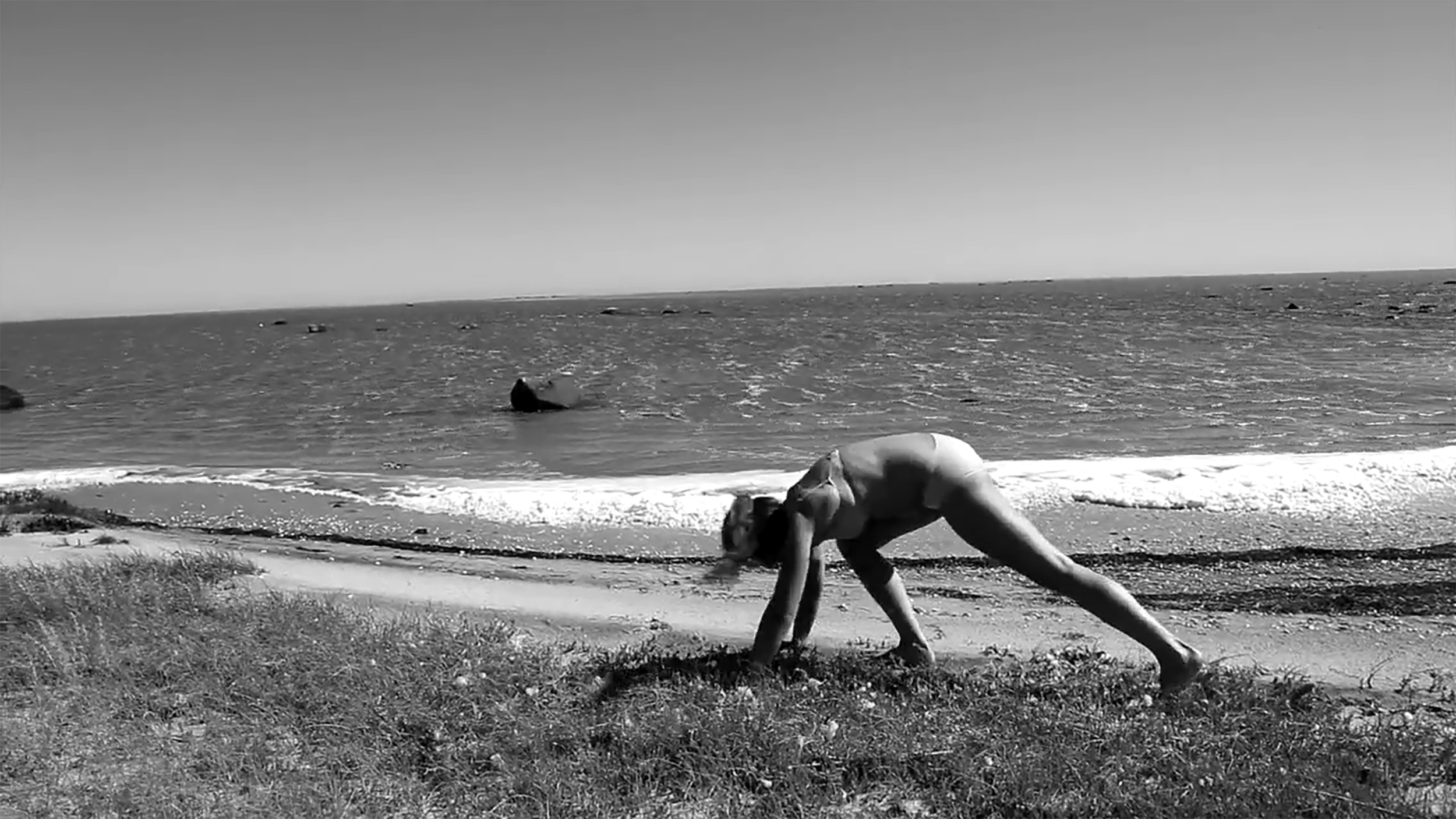Fathom 2015
Video documentation of performance, 1:01:56 min, with sound
In the live performance, Fathom, Katja Bjørn staged a reflective and interactive embrace with nature. With inspiration from a Buddhist prayer walk, she used her body length to measure a small island south of Læsø with the meditative rhythmic of an inchworm (geometer moth caterpillar), in what can be described as a motherly form of embrace with the special sort of nature that characterises the island. Bjørn presses her body and face to the ground, stands up in a forward curve and then repeats, like an inchworm, going over grass, beach and rock until the unnamed island was measured to 349 body lengths. After the performance, the island was unofficially named ‘Favn’ (Embrace).
The abstract metric system is the universal standard for distance and measurement from the nanometer of physics to kilometres and the lightyears of cosmology. Yet, measurements and quantifications have not always been done in this way. Many other ways of measuring have been used by humankind to structure the world around them, often based on the human body: we all know cubit, foot and the more maritime fathom. However, the body as a measurement rarely plays a role in ordinary life and interaction with nature.The abstractly defined metre has been the most common standard since its legitimation by the French National Assembly in 1791. Metre has been defined as one ten-millionth of the distance from the equator to the North Pole along the Paris meridian, or as the distance light travels in 1/299792458 of a second.
With Fathom, Bjørn seeks to revive the physical interaction, or the bodily form of measuring, with reality. By measuring nature with your own body you also shape the world around you in an invested way. This connects the history of nature with that of culture as well as anchoring these within the human who is measuring it through touch and embrace. Although it would be absurd to use body length as a universal standard, this practice is invested in the reality that is being measured, which creates a correspondence between the measurer and the measured. The result is a reflexive interaction with nature that does not aspire for technological or cultural domination but rather for a sort of human affection. In other words, it creates a different kind of awareness of your surroundings when you have measured the precise dimensions with your own body.
